
The history of red drum world records
Setting the stage: the early benchmarks
The quest for the world record redfish, or red drum as it's commonly known, has captivated anglers for decades. These game fish, known for their powerful runs and impressive size, have been the target of many fishing expeditions. The International Game Fish Association (IGFA) plays a crucial role in documenting these records, ensuring a standard for verifying the accomplishments of these dedicated anglers. The early days of red drum fishing saw plenty of local legends and tall tales, but it wasn't until the IGFA started keeping official records that the bar was truly set. Established in 1939, the IGFA has been the gold standard in the sport fishing community for certifying all sorts of catches, including the impressive redfish.Defining moments in redfish history
One of the most renowned moments in redfish history occurred in 1984, when David Deuel set the world record with his astonishing 94-pound 2-ounce catch in North Carolina. This monumental red drum, caught using conventional tackle, remains a benchmark for aspiring record-setters to this day. Deuel's achievement was made possible by meticulous planning, expert technique, and sheer perseverance. For fly fishing enthusiasts, Dotty Ballantyne’s catch in 2015 is a standout. She managed to land a 43-pound redfish using a 10-pound tippet, setting a women's tippet class world record. This incredible feat highlighted the skill required to target such a powerful fish using lighter gear.Chasing the big reds
Anglers continue to dream of topping these records, with hotspots like the Gulf of Mexico, Chesapeake Bay, and the coast of North Carolina being prime locations for big redfish. Angler and guide Gregg Arnold, known for his expertise in fly fishing for redfish, has contributed significantly to the sports fish community by sharing techniques and insights on targeting these giants. As records continue to fall and new benchmarks are set, the passion for chasing red drum remains undeterred. With advances in fishing technology and a growing interest in sustainable practices, the future of redfish fishing looks bright. Want to know about other majestic catches? Check out our article on the goliath grouper world record.The biggest redfish ever caught
The biggest redfish ever caught
A record that stunned the angling world
One of the most awe-inspiring tales in the fishing community involves David Deuel, who caught the biggest redfish on record. In November 1984, at Cape Hatteras, North Carolina, Deuel reeled in a monstrous red drum weighing 94 pounds and 2 ounces. This record still stands, despite numerous anglers' attempts to beat it. According to the International Game Fish Association (IGFA), Deuel's catch remains unbroken, serving as a goalpost for every angler aiming to make history. Imagine the raw excitement and effort it must’ve taken to land such a colossal fish—Deuel is often cited as an inspiration in fishing circles.Notable catches over the years
While Deuel's record remains unbeaten, other significant redfish catches have come remarkably close. Tony Kirk landed an 80 pounds, 11 ounces red drum in 1983, just a year before Deuel set the world record. Similarly, Tom Stevenson hooked an 81 pounds redfish off the coast of Virginia, but it fell short of Deuel's legendary catch. Louisiana is also known for producing some mammoth redfish. In Cocodrie, Louisiana, anglers consistently report catching redfish weighing over 50 pounds. Texas joins the red drum party too—Port Aransas is famous for its big catches including a 59-pounder by Bob Stafford in 1988.Women in the world of redfish records
Women anglers have also made a significant impact in the world of redfish fishing. Dotty Ballantyne set a striking record in the women’s tippet class with a 43 pounds, 8 ounces red drum she landed in Hatteras, North Carolina. This notable achievement showcases how women are not just participating but excelling in the sport. Another recognized woman angler is Virginia native, Jim Smith, who reeled in a gigantic redfish weighing 46 pounds, setting a state record that still stands.How the igfa verifies these awe-inspiring records
Verifying world records isn't a straightforward process. The IGFA employs stringent guidelines to ensure the authenticity of these catches. The fish's weight must be measured on an IGFA-certified scale, and a comprehensive review of photographic evidence is conducted. Once these steps are met, the IGFA examines whether the angler followed ethical practices, especially the condition to “documented released alive” emphasized by experts like Conway Bowman. Every record-breaking catch is a testament to the angler's skill, patience, and sometimes sheer luck. For further inspiration, see the biggest fish caught in the world and how they stack up against record-breaking catches here.Notable anglers and their record redfish
Anglers who've made their mark
You can't dive into the record books without stumbling upon tales of legendary anglers who have etched their names in history.
One of the most prominent figures is David Deuel, who set the IGFA world record back in 1984. His redfish weighed in at a staggering 94 pounds 2 ounces, caught in Cape Hatteras, North Carolina. That record has stood the test of time and remains a benchmark for red drum aficionados worldwide.
Another notable name is Conway Bowman, an exceptional angler known for his prowess in fly fishing. While he may not hold the world record, his dedication and skill have inspired many in the sport.
It's also worth mentioning Dotty Ballantyne, who made waves as one of the few women to hold a tippet class world record. Her 33-pound 8-ounce catch on a 20-pound tippet in Chesapeake Bay, Virginia, remains a testament to her skill and perseverance.
Not to be outdone, David Mangum has also established himself as a record holder with a red drum that weighed pounds, caught in the waters off the Gulf of Mexico. His techniques and strategies are often studied by aspiring anglers hoping to make their mark.
Remember stories of Gregg Arnold, who is famed for catching epic red drums in Louisiana's Cocodrie. His name is often synonymous with some of the largest redfish caught in the region, making him a local legend.
Find out more about how to identify different species that some famous fishers like Tom Stevenson and Tony Kirk might encounter in their angling journeys.
These anglers have not only caught massive red drum but have also contributed to the community by sharing their knowledge, raising awareness about sustainable fishing practices, and promoting conservation efforts. Their stories serve as inspiration for both seasoned anglers and those just picking up a rod for the first time.
The role of the IGFA in verifying records
Setting the benchmarks: IGFA's pivotal role
The International Game Fish Association (IGFA) plays a critical role in the world of fishing, especially when it comes to verifying and documenting world records, including the prestigious world record red drum. Established as the global authority on game fish and fishing records, the IGFA ensures that all records are authenticated with the highest standards.
How the IGFA ensures accuracy
When an angler believes they've caught a new record fish, such as a potential record redfish, the IGFA steps in to verify it. The process includes precise measurements of the fish, including weight, length, and girth. They also scrutinize the type of tackle and techniques used to ensure they meet the official guidelines. Every detail is meticulously documented to maintain the credibility of each record.
Real-life scenarios: rigorous standards
Consider the case of David Deuel, who holds the all-tackle world record for a red drum caught in 1984 off the coast of Hatteras, North Carolina. His catch weighed an incredible 94 pounds, 2 ounces. For this record to stand, Deuel had to provide extensive evidence, including photographs, witness testimonies, and detailed accounts of the catching process. The IGFA's rigorous standards ensured that his achievement was indisputable.
The intricacies of record classifications
The IGFA distinguishes between various record categories, such as all-tackle records, line class records, and fly rod records. This classification allows anglers to compete on a level playing field, showcasing their skills across different methods of fishing. For instance, Dotty Ballantyne, who holds the women's 8-pound tippet class world record, caught a 41.65-pound redfish in Port Aransas, Texas, in 2003. This catch was verified under specific parameters set for tippet class fishing.
Controversies and transparency
Although the IGFA strives for transparency, controversies do arise. Anglers sometimes dispute the validity of certain records, questioning the tackle used or the conditions under which the fish was caught. However, the IGFA’s commitment to thorough inspections and clear guidelines helps mitigate these disputes. They also offer an appeals process, allowing anglers to contest or defend records with additional proof.
Constantly evolving standards
The IGFA continually updates its standards to adapt to new advancements in fishing techniques and gear. This adaptability ensures that all anglers, from seasoned pros like Conway Bowman to up-and-coming fishers, compete under fair and consistent rules. Their dedication to evolving the sport keeps the excitement and integrity of record-breaking alive.
Tips for catching a record red drum
Get the right gear
Veteran anglers swear by their setup. David Mangum, renowned for his fly fishing exploits, emphasizes the importance of using a reliable rod and reel combination. He suggests a 10-weight fly rod, which allows for better control when reeling in those hefty reds. The right gear gives you a fighting chance against the powerhouse that is the red drum.
Master bait selection
Not all baits are created equal. According to Gregg Arnold, live mullet or crab can make all the difference. These baits mimic the natural prey of redfish, increasing the chances of a bite. David Deuel, the record holder for a 94-lb 2-oz redfish, reportedly used blue crab as his bait of choice when he set his standing record in 1984.
Location is key
Fishing in the right waters is more than half the battle. In Cape Hatteras, North Carolina, known for yielding some record-breaking red drums, anglers frequently find success. Likewise, the rich fishing grounds of Cocodrie, Louisiana, have seen many record attempts. Tony Kirk points out that knowledge of local hotspots can drastically improve odds.
Timing your attempts
Timing the tides and fishing during peak feeding times cannot be overlooked. Jim Smith advises targeting the early morning or late evening hours when redfish are most active. Fall months are prime redfish fishing times, particularly in regions like the Gulf of Mexico and the Chesapeake Bay.
Use the right techniques
Experts like Bob Stafford recommend using a combination of patience and finesse while reeling in your catch. Techniques such as using a steady retrieval rate and maintaining consistent pressure on the line can mean the difference between a new record or a heartbreaking near-miss.
Fly fishing for redfish: breaking records
Fly fishing: mastering the art for world record redfish
Fly fishing for redfish, often called red drum, is more than just a sport--it's an art form. Breaking records with a fly rod requires precision, skill, and a deep understanding of the fish's behavior. Let’s delve into how some of the most renowned anglers have made a name for themselves in the redfish scene.
Notable fly rod records
Dotty Ballantyne's name frequently pops up in the world of fly fishing for redfish. In 2011, she set the female tippet class world record with a red drum caught on an 8-pound tippet, weighing in at 43 pounds and 8 ounces. Another big name is David Mangum, who has not only guided many clients to record catches but also holds several fly rod records himself.
Fly fishing techniques that can land you a record
Anglers often use various fly patterns to entice redfish. Popular choices include poppers, clouser minnows, and crab imitations. Gregg Arnold, a well-known guide in Louisiana, often recommends using a fly that mimics the natural prey found in the shallow marshes.
Experts like Conway Bowman suggest focusing on the tidal movements. “It's all about timing. Knowing when the redfish are feeding makes a huge difference,” notes Bowman. Additionally, stealth is crucial; redfish are easily spooked, so making a quiet approach can increase your chances significantly.
Records set on the fly
The current IGFA all-tackle world record for a red drum was set by David Deuel in 1984, catching a whopping 94-pound, 2-ounce fish. While this record was not on a fly rod, it stands as an inspiration for what is possible. Fly angling records for redfish continue to evolve, with new challenges enticing anglers from North Carolina to the Gulf of Mexico.
Expert advice for aspiring record-breakers
Bob Stafford, a fly fishing veteran, emphasizes practice and persistence: “Fly fishing for redfish is an exercise in patience. You need to perfect your casting, understand the fish's habits, and never give up.” Tony Kirk also advises keeping detailed notes of fishing conditions, as understanding past success can lead to future triumphs.
Conclusion
Anyone venturing into the record books with a fly rod must bring their A-game. Armed with the right knowledge, patience, and a bit of luck, you might just find yourself holding a world record redfish.
State records vs. world records: what's the difference?
Comparing state records and world records
When it comes to fishing trophies, understanding the difference between state records and world records is crucial for any angler. Both accolades symbolize extraordinary achievements, but the criteria and recognition they come with are different.
State records: spotlight on local talent
State records are often celebrated within the local fishing communities. For example, the Louisiana fish yearly awards highlight anglers who catch record-setting fish within the state boundaries. In North Carolina, the record red drum weighed in at 94 pounds 2 ounces, caught by David Deuel on November 7, 1984, just off Hatteras. North Carolina is a hotspot for red drum fishing, with numerous state records being set here.
World records: a global stage
World records, on the other hand, are recognized globally and verified by the International Game Fish Association (IGFA). Among world-record holders for redfish, David Mangum's huge catch on a fly rod often comes to mind, even though it was caught and released without official documentation. To set a world record, meticulous records must be kept, and the catch must adhere to IGFA rules.
The role of the IGFA
The IGFA world records require thorough verification. The fish is weighed on certified scales, and details like the angler's equipment, the fight duration, and other specifics are recorded. Tom Stevenson, for example, set a world record that was meticulously documented and verified by the IGFA.
Case study: Tony Kirk and the Cocodrie beast
Tony Kirk is known for his remarkable redfish catch in Cocodrie, Louisiana. Though his fish weighed 96 pounds, it did not surpass David Deuel's world record. This speaks to the rigorous standards and scrutiny that come with attempting to set a world record. Still, catches like these make local history and keep the angling community inspired.
Why both records matter
State and world records both serve as benchmarks for anglers, driving the pursuit of bigger and better catches. Bob Stafford, a respected angler and fishing expert, once said, "While world records grant global fame, it's the state records that often spark a love for the sport and bring communities together." Whether you're fishing in the Gulf of Mexico, the Chesapeake Bay, or anywhere else, aiming for either a state record or a world record offers its own unique thrill and sense of achievement.
The future of redfish records
The changing tide of redfish records in the future
Redfish records have always been a dynamic and fiercely contested subject. The landscape of red drum record-breaking is expected to evolve significantly in the coming years, driven by numerous factors such as advancements in fishing technology, changing environmental conditions, and shifting regulations.
Technological advancements
Fishermen in the future will be relying on a slew of new technological advancements to improve their chances of catching record-breaking redfish. High-tech fishing rods, reels, and lines, along with advanced sonar and mapping equipment, will become more prevalent. These innovations are expected to change the game significantly. Renowned angler Tony Kirk once stated, "The right equipment can make all the difference. Today's gear gives us a definite edge".
Environmental changes
The impact of climate change on fish populations, particularly redfish, cannot be ignored. Warmer water temperatures and shifting marine ecosystems may alter the habitats and behaviors of these prized game fish. We've already seen Jim Smith note in a recent study that some redfish populations are migrating further north in response to warmer waters. Anglers will need to adapt to these changes to continue breaking records effectively.
Regulatory shifts
Fishing regulations are constantly evolving to protect fish populations and ensure sustainable practices. The IGFA (International Game Fish Association) and other regulatory bodies play a critical role in setting these guidelines. Changes in size limits, bag limits, and fishing seasons can all impact the pursuit of redfish records. As Bob Stafford of the IGFA noted, "Our primary goal is to balance record-breaking with conservation".
Conservation efforts
Gone are days when anglers kept every big fish they caught. Modern anglers are more focused on conservation, with many embracing catch-and-release practices. Gregg Arnold, famous for catching and releasing large redfish in Louisiana, has often emphasized the importance of releasing these giants back into the water to maintain healthy populations.
Youth involvement and new angler demographics
There's a noticeable increase in youth participation in fishing, thanks to targeted outreach programs and educational initiatives. This surge of fresh talent brings innovative techniques and a different perspective to the sport, as young anglers like David Mangum demonstrate with impressive catches on light tackle.
The competitive spirit never dies
Despite these changes, the core spirit of breaking redfish records remains unchanged. Anglers will always crave the thrill of landing the biggest fish, pushing the limits of their skill and equipment. The bond between the angler and the red drum, a dance of patience and tenacity, will continue to inspire and drive the next generation of record-breakers.

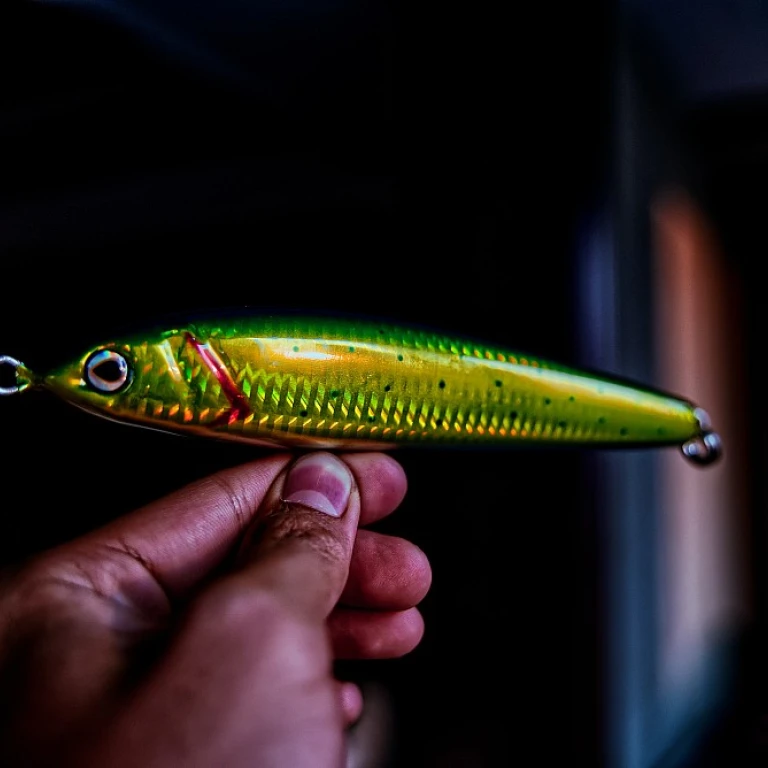


-large-teaser.webp)
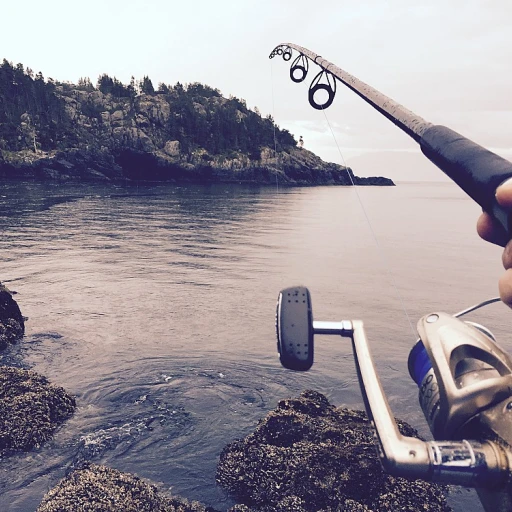
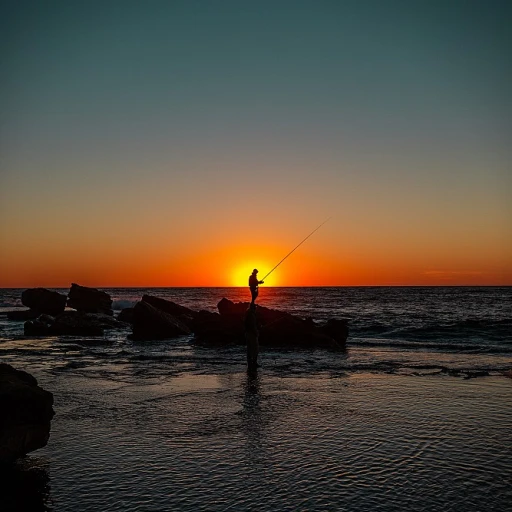
-large-teaser.webp)
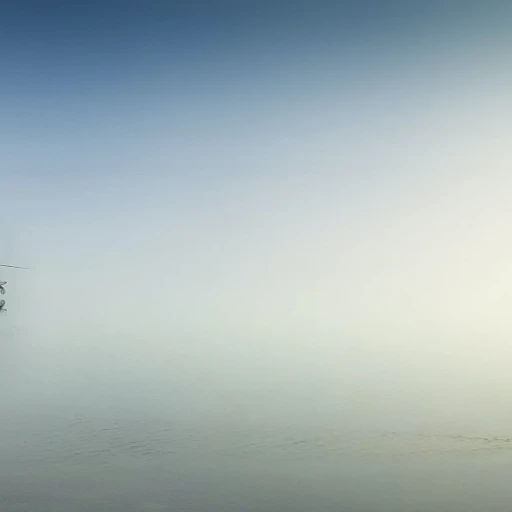
-large-teaser.webp)
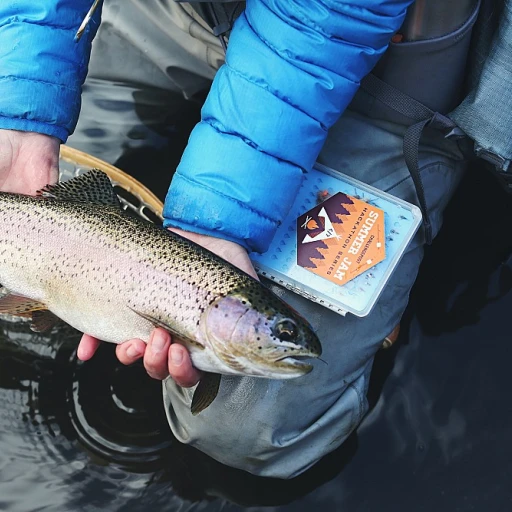
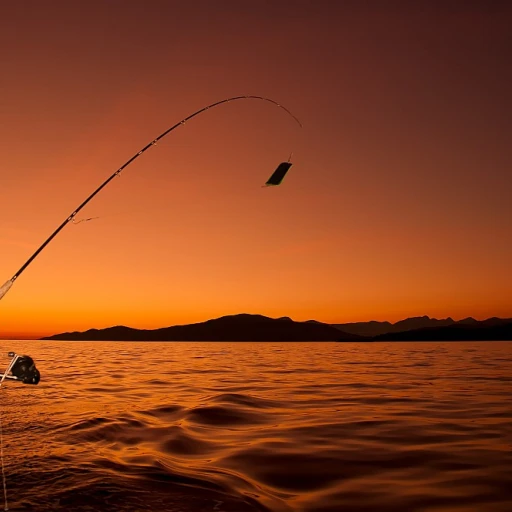
-large-teaser.webp)
-large-teaser.webp)